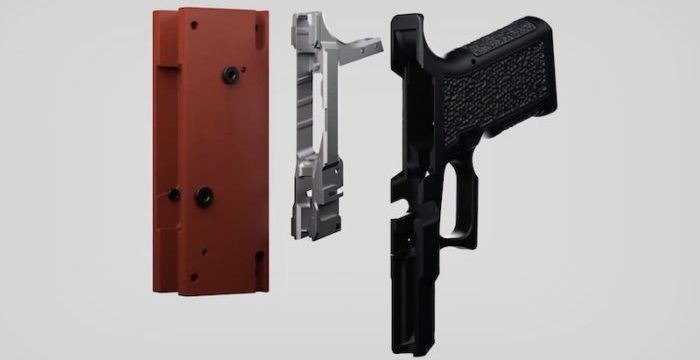(José Niño, Headline USA) In the wake of the Supreme Court’s March 2025 decision upholding Biden-era regulations on ghost guns, 3D gun design provider Defense Distributed and its founder, Cody Wilson, have developed what he calls the “G80″—a new product that allows firearms enthusiasts to legally assemble their own gun.
Instead of a typical ghost gun, which is assembled from pre-made parts with relatively little effort, Defense Distributed’s G80 requires more skill and time to complete. However, that extra effort is what makes the G80 legal, according to Defense Distributed.
The new firearms project represents the latest chapter in the ongoing battle between gun rights activists and regulators, particularly significant following Polymer80’s closure and the landmark Supreme Court ruling on untraceable firearms.
Founded in 2013 by Loran Kelley Jr. and David Borges, Polymer80 became the dominant manufacturer of “80 percent” receivers and frames – unfinished firearm components that could be completed at home without serial numbers or background checks. These products formed the core of what became known as “ghost guns” – untraceable firearms assembled from components purchased without the oversight typically required for commercial firearms.
The company faced mounting legal and regulatory challenges, including lawsuits from Washington D.C., Los Angeles, and Baltimore, resulting in settlements totaling millions of dollars. In July 2024, Polymer80 ceased operations, with CEO Loran Kelley Jr. citing the financial burden of being “sued left and right” and needing to “stop the hemorrhaging.”
In the March Supreme Court ruling Bondi v. VanDerStok, the court upheld the Bureau of Alcohol, Tobacco, Firearms and Explosives’ (ATF) 2022 rule regulating “ghost guns,” affirming that certain weapon parts kits and unfinished firearm components qualify as “firearms” under the Gun Control Act of 1968.
The 7-2 decision, authored by Justice Neil Gorsuch, concluded that the ATF’s interpretation of the statute is not “facially inconsistent” with the act. The Court explained that “some weapon parts kits and unfinished frames or receivers” can qualify as firearms under the statute. Using the Polymer80 “Buy Build Shoot” kit as an example, Justice Gorsuch determined it met the definition of a “weapon” that “may readily be converted to expel a projectile by the action of an explosive”.
The Court’s decision upheld regulations that defined “firearms” to include products such as gun kits that could be readily converted into operational weapons, requiring manufacturers to include serial numbers and perform background checks on purchasers.
Cody Wilson, a longtime advocate for unregulated access to firearms through technology, has been at the forefront of the DIY gun movement since creating the world’s first 3D-printed handgun, the Liberator, in 2013. Wilson’s company, Defense Distributed, has continuously sought ways to circumvent firearms regulations through technological innovation.
The G80 project represents Wilson’s latest adaptation to the changing regulatory landscape. Described as a “next-generation unfinished FCU ecosystem,” the G80 is compatible with G19 Gen3 and 120R components.
Defense Distributed markets a G80 jig set designed to work with “Glock-type modular fire control units,” which can be used manually or with the company’s Ghost Gunner CNC milling machine.
Following the recent Supreme Court ruling, Wilson noted that many in the DIY gun community believed the ghost gun industry was “dead.”
However, Wilson saw an opening post-VanDerStok to work around the Court’s decision.
“The first thing we’ve done is to take the guidelines that the court more or less accidentally offered… and applied them to a new way of thinking about an 80% pistol where you’re not converting the pistol frame,” Wilson noted. “You’re using a pistol receiver, which is unusual. Receivers and frames have different meanings now in the law.”
“So we’ve created a Glock style fire control unit, which we call the receiver. It’s made of metal and then you could print or buy a kind of grip, which we call a grip module,” Wilson further detailed.
“We didn’t invent this model. This has already been done,” the Defense Distributed founder stressed. He cited the examples of Sig Sauer models, such as the P320 or the P365, to prove his point.
The Supreme Court’s recent decision reaffirms the government’s authority to regulate ghost guns, but Wilson’s G80 demonstrates how technological advancements continue to test those boundaries.
José Niño is the deputy editor of Headline USA. Follow him at x.com/JoseAlNino.

